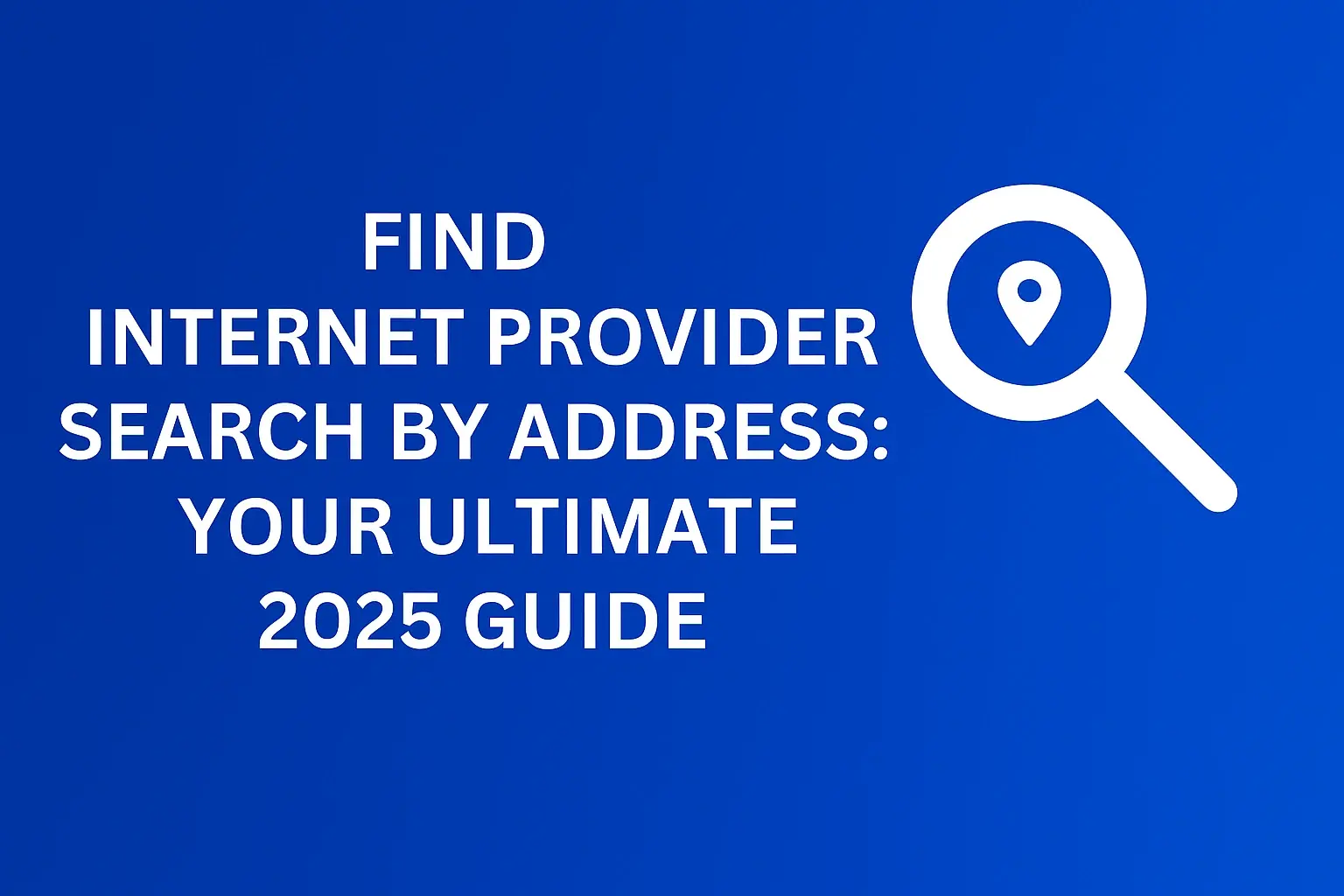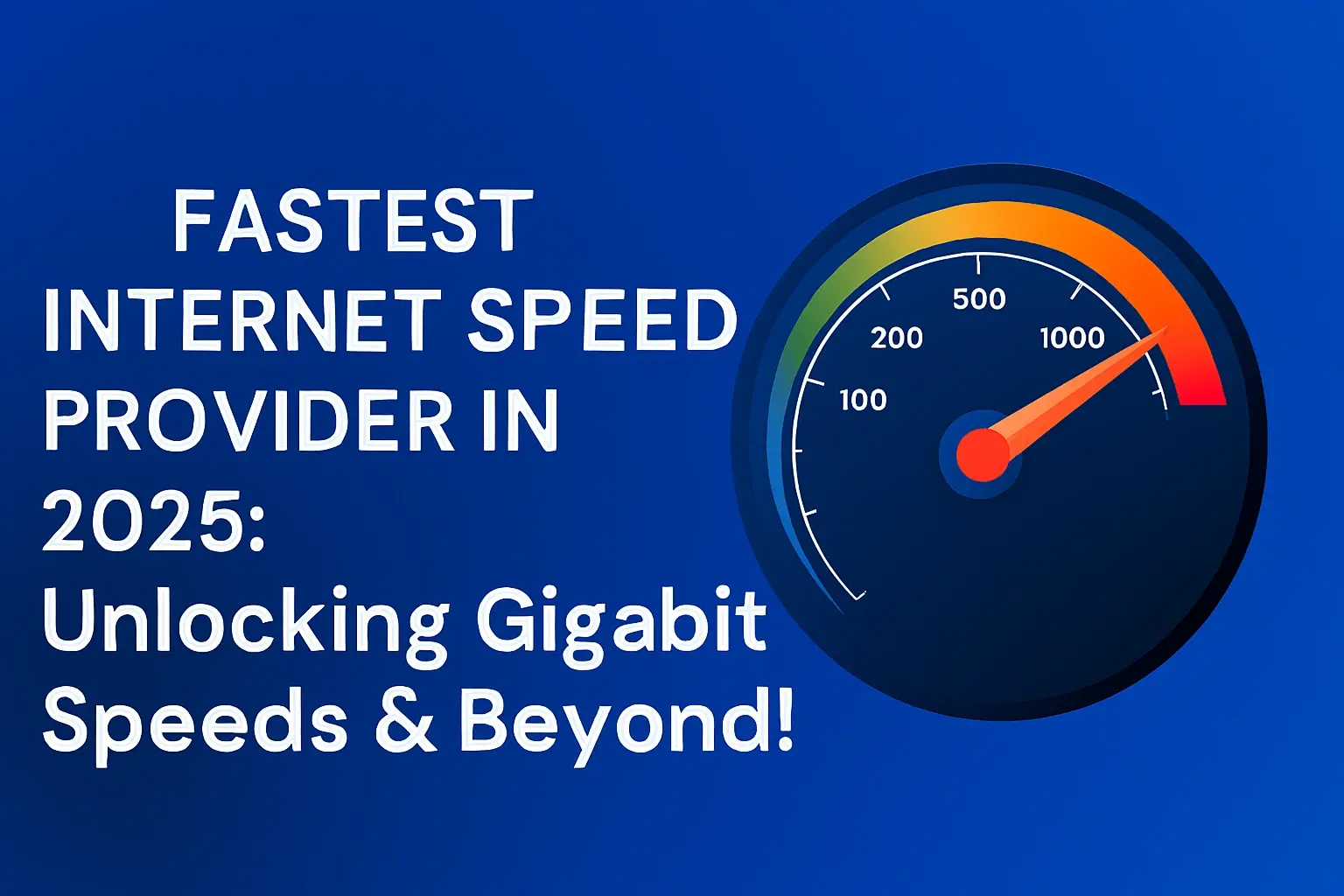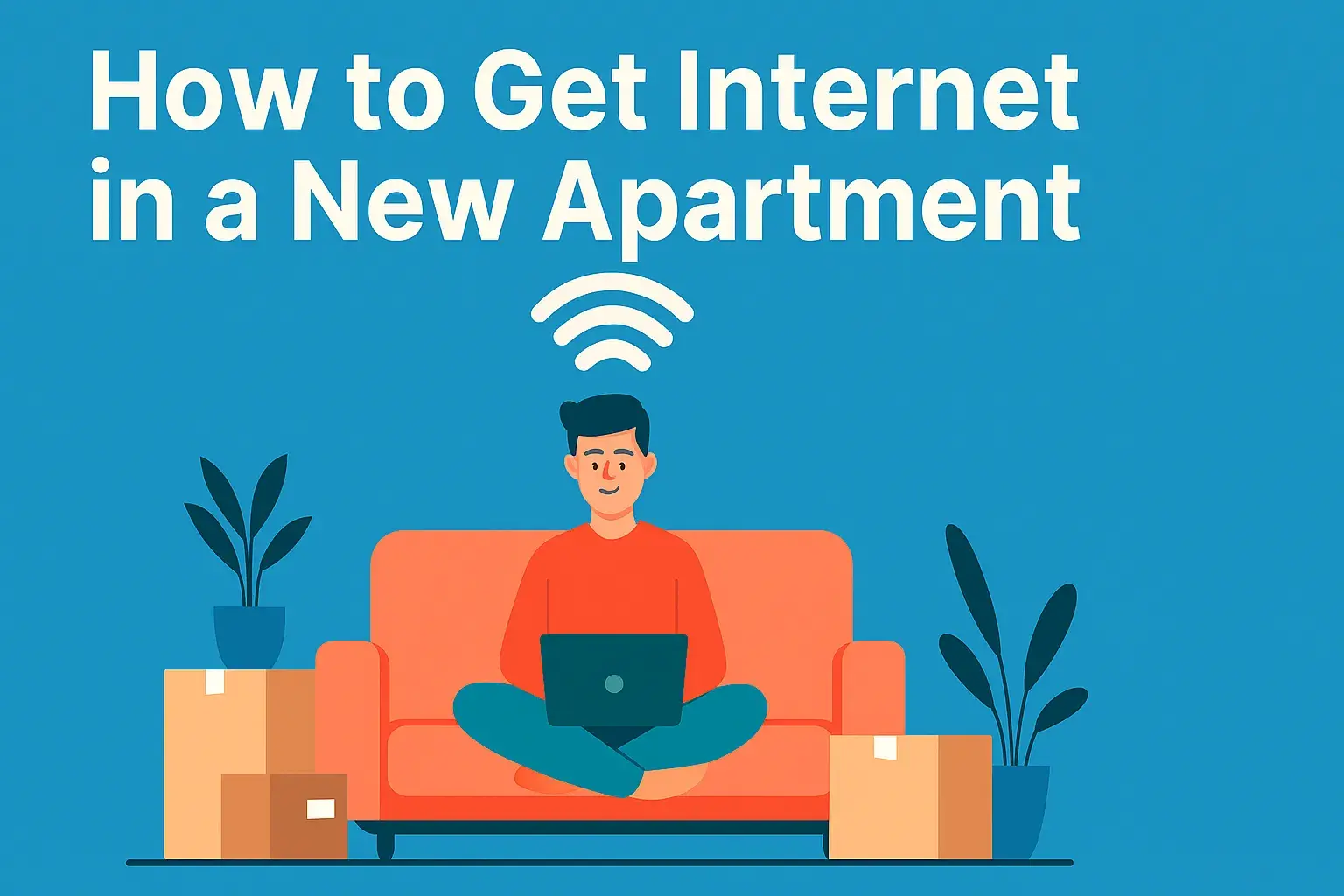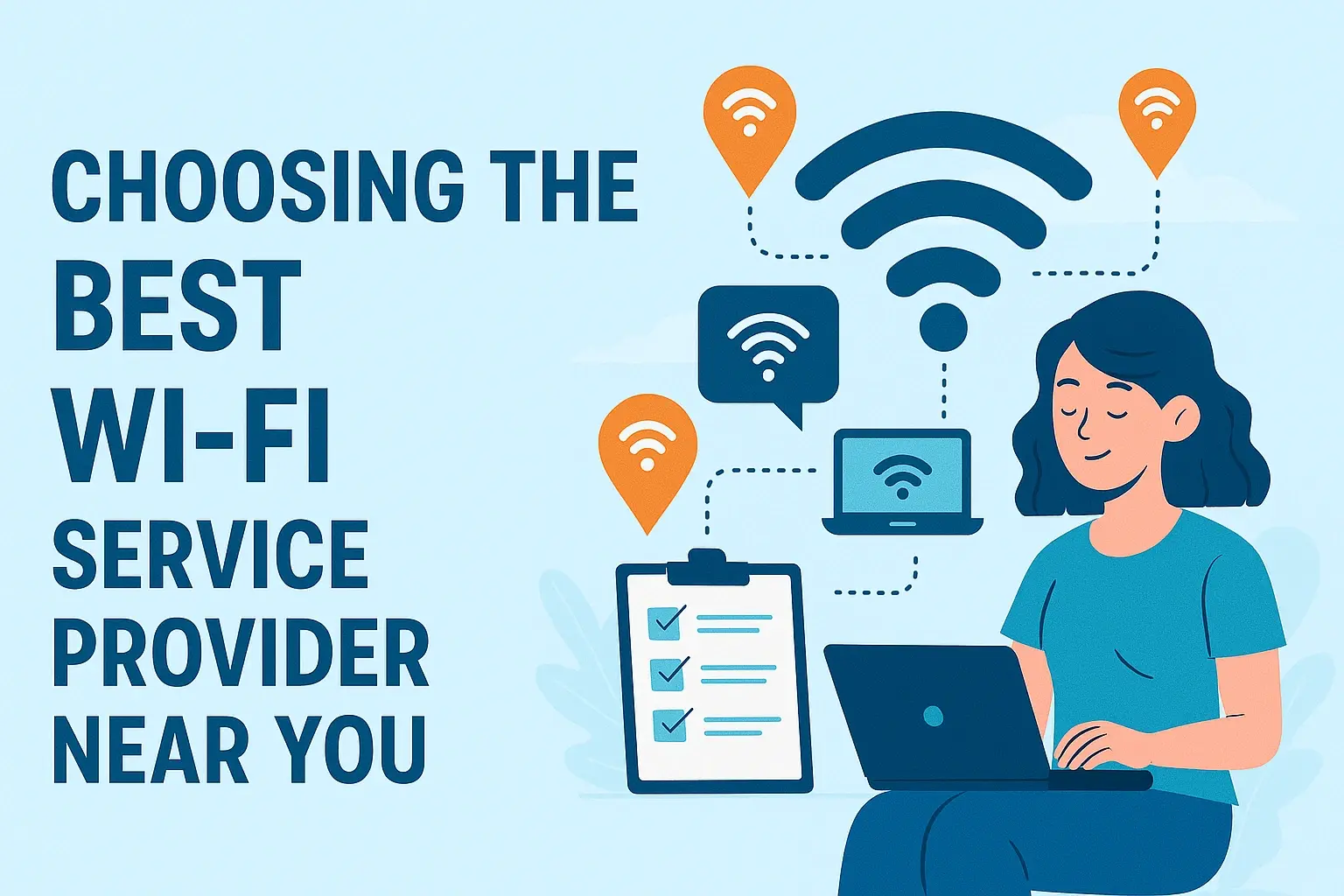Quantum Fiber Internet: Plans and Packages Breakdown
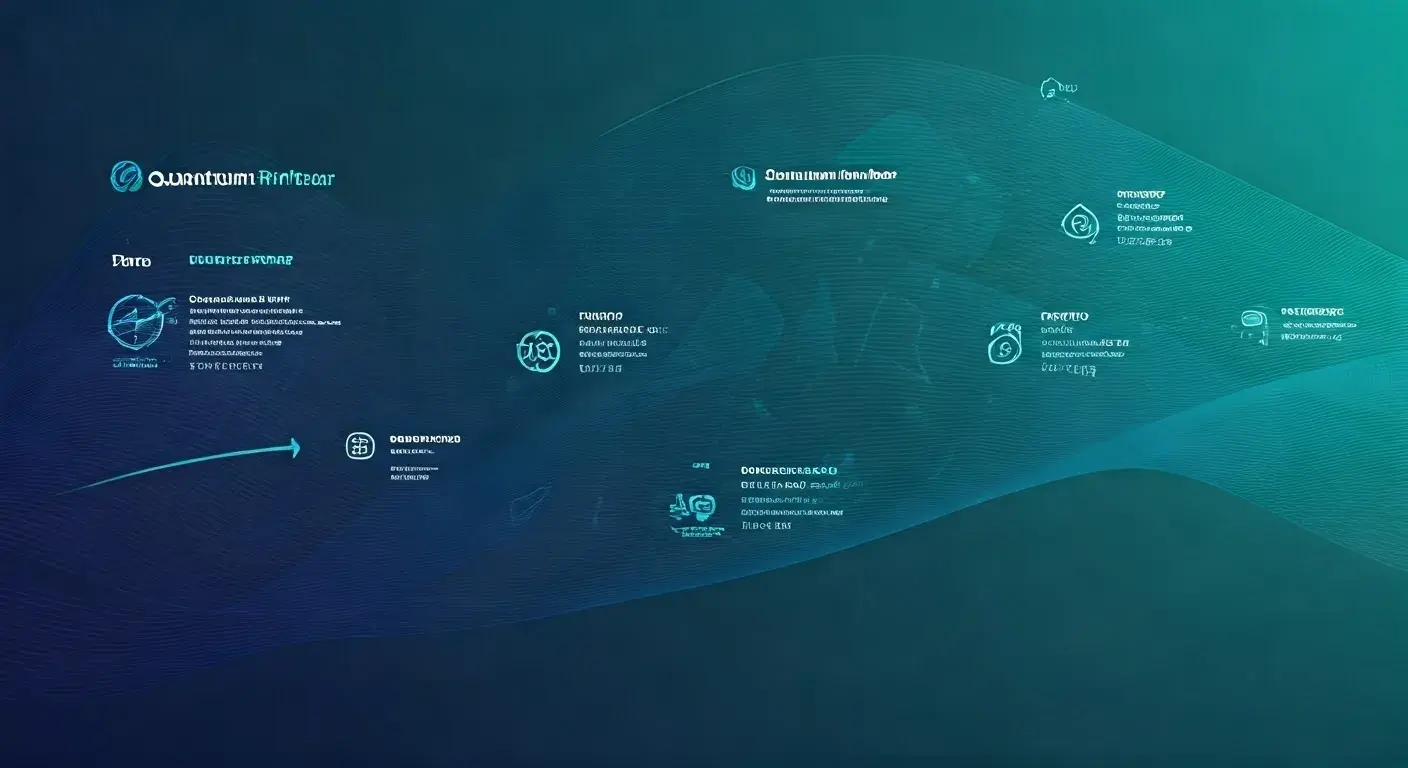
Explore Quantum Fiber Internet's 2025 plans and packages. This guide details speeds, pricing, installation, and how Quantum Fiber's advanced network offers superior connectivity for homes and businesses, helping you choose the best package for your needs.
Understanding Quantum Fiber Internet: A 2025 Overview
In the rapidly evolving digital landscape of 2025, reliable and high-speed internet is no longer a luxury but a fundamental necessity. Whether it's for remote work, immersive online learning, seamless streaming of 8K content, or the burgeoning world of cloud gaming and augmented reality, the demand for robust internet infrastructure has never been higher. Quantum Fiber Internet has emerged as a significant player, distinguished by its commitment to deploying cutting-edge fiber-optic technology directly to homes and businesses. This article provides a comprehensive breakdown of Quantum Fiber's offerings, focusing on their diverse plans and packages, to help consumers make an informed decision in 2025. We will delve into what sets Quantum Fiber apart, analyze their current service offerings, guide you through the installation process, compare it with traditional internet services, and offer best practices for optimizing your connection. By the end of this guide, you'll have a clear understanding of how Quantum Fiber can meet your connectivity needs.
The year 2025 marks a pivotal point in internet technology adoption. The global average internet speed continues to climb, with fiber optics leading the charge in delivering symmetrical upload and download speeds that are crucial for modern online activities. Quantum Fiber is at the forefront of this transition, investing heavily in building out its next-generation fiber network. Unlike older technologies that rely on copper wiring for the final connection, Quantum Fiber utilizes pure fiber optics all the way to the premises (FTTP), ensuring minimal data loss, superior bandwidth, and immunity to electromagnetic interference. This translates to a more stable, faster, and future-proof internet experience. Statistics from early 2025 indicate that homes equipped with fiber optic internet experience significantly fewer outages and enjoy download speeds that are, on average, 50% faster than those on cable networks. Furthermore, the increasing prevalence of smart home devices, IoT applications, and the demand for ultra-high-definition content necessitates an internet service capable of handling massive data volumes simultaneously. Quantum Fiber's infrastructure is designed precisely for this purpose, offering scalability that can accommodate future technological advancements and escalating user demands.
The company's strategy often involves partnering with municipalities and local communities to accelerate the deployment of its fiber network, aiming to bring gigabit-speed internet to underserved and overlooked areas. This community-centric approach, coupled with a focus on customer experience, positions Quantum Fiber as a compelling alternative to established providers. As we navigate through the intricacies of their service plans, it's important to consider not just the advertised speeds but also the underlying technology, the total cost of ownership, and the long-term benefits of a fiber optic connection. This comprehensive overview aims to equip you with the knowledge needed to make the best choice for your digital life in 2025.
Key Concepts: What Makes Quantum Fiber Stand Out
To truly appreciate Quantum Fiber's offerings, it's essential to understand the core technologies and principles that underpin their service. Several key concepts differentiate Quantum Fiber from traditional internet service providers (ISPs) and highlight the advantages of their fiber-optic network.
Fiber-to-the-Premises (FTTP) Technology
The most significant differentiator for Quantum Fiber is its exclusive use of Fiber-to-the-Premises (FTTP) technology. Unlike hybrid fiber-coaxial (HFC) networks, which use fiber optic cables for the main lines and coaxial cables for the final connection to a home, FTTP runs fiber optic cables directly from the provider's central office all the way to the customer's doorstep. This eliminates the bottlenecks and signal degradation associated with copper or coaxial cables. Fiber optic cables transmit data as pulses of light, which are far more efficient and less susceptible to interference than electrical signals. This direct fiber connection is the foundation for Quantum Fiber's ability to deliver exceptionally high and consistent speeds.
Symmetrical Speeds
A hallmark of true fiber optic internet, including Quantum Fiber's offerings, is symmetrical speeds. This means that the advertised download speed is matched by an identical upload speed. In 2025, this is increasingly critical. While traditional cable internet often provides much slower upload speeds (e.g., 100 Mbps download and 10 Mbps upload), Quantum Fiber typically offers plans with 1 Gbps download and 1 Gbps upload, or even higher. Symmetrical speeds are vital for activities such as video conferencing with high-quality video, uploading large files to cloud storage, live streaming, online gaming, and running a home-based business that relies on cloud applications. The imbalance in speeds on older networks can lead to frustrating experiences, with video calls freezing or large file uploads taking an inordinate amount of time.
Bandwidth and Capacity
Fiber optic cables possess a vastly greater capacity for data transmission compared to copper or coaxial cables. This means Quantum Fiber networks can handle a significantly larger volume of data traffic simultaneously without experiencing congestion. In 2025, with an average of 25 connected devices per household and the increasing adoption of bandwidth-intensive applications like 8K streaming and cloud gaming, high bandwidth is paramount. Quantum Fiber's infrastructure is built to accommodate this growing demand, ensuring that even during peak usage hours, your internet performance remains stable and fast. This robust capacity is what allows Quantum Fiber to offer multi-gigabit speeds reliably.
Low Latency
Latency, often referred to as ping, is the time it takes for data to travel from your device to a server and back. Lower latency means a more responsive internet connection. Because fiber optic cables transmit data as light, the signal travels at near light speed, resulting in significantly lower latency compared to electrical signals over copper. For gamers, this means reduced lag and a more fluid gameplay experience. For video conferencing and real-time applications, low latency ensures smooth, uninterrupted communication. Quantum Fiber's FTTP network is engineered to deliver exceptionally low latency, making it ideal for time-sensitive online activities.
Future-Proofing and Scalability
Investing in Quantum Fiber is an investment in a future-proof internet connection. The fiber optic infrastructure itself has the capacity to deliver speeds far beyond what is currently offered, potentially reaching tens or even hundreds of gigabits per second with technological advancements. This inherent scalability means that as your internet needs grow and new technologies emerge, your Quantum Fiber connection will likely be able to keep pace without requiring a complete overhaul of the physical network. This is a stark contrast to older technologies that are reaching their physical limitations.
Quantum Fiber's 2025 Plans and Packages: A Detailed Breakdown
Quantum Fiber offers a range of plans designed to cater to different user needs and budgets in 2025. While specific pricing and package names can vary slightly by region and are subject to change, the core offerings are built around their high-speed fiber optic network. The primary distinction between plans typically lies in the advertised download and upload speeds.
Gigabit Fiber Plans (e.g., 1 Gig)
This is often Quantum Fiber's flagship offering and represents the standard for high-speed internet in 2025. A typical Gigabit plan provides speeds of up to 1 Gig (1000 Mbps) download and 1 Gig (1000 Mbps) upload. This plan is ideal for:
- Households with multiple users and devices simultaneously streaming, gaming, or working from home.
- Users who frequently upload large files (e.g., video editors, content creators).
- Gamers who require low latency and fast download/upload speeds for game updates and online play.
- Smart home enthusiasts with numerous connected devices.
- Businesses requiring robust connectivity for cloud-based operations, VoIP, and video conferencing.
Pricing for Gigabit plans in 2025 typically ranges from $60 to $90 per month, often with introductory offers or discounts for bundled services. It's crucial to check for any data caps, although most fiber providers, including Quantum Fiber, aim to offer unlimited data on their high-speed plans. Equipment fees, such as for a modem/router, may apply, though many providers include these in the monthly cost or offer them for a one-time fee.
Multi-Gigabit Fiber Plans (e.g., 2 Gig, 5 Gig)
For the most demanding users and businesses in 2025, Quantum Fiber is increasingly offering multi-gigabit plans. These can include speeds like 2 Gig (2000 Mbps) or even 5 Gig (5000 Mbps) download and upload. These plans are designed for:
- Households with extremely high internet usage, such as multiple simultaneous 8K streams, extensive cloud gaming setups, and numerous power users.
- Businesses with significant data transfer needs, large server operations, or advanced networking requirements.
- Early adopters of emerging technologies that demand extreme bandwidth.
These premium plans come at a higher price point, often starting from $100-$150 per month and going up for 5 Gig services. They may also require more advanced networking equipment (e.g., Wi-Fi 6E or Wi-Fi 7 routers) to fully utilize the speeds, and Quantum Fiber may offer specific hardware bundles for these tiers. It's important to note that achieving the full multi-gigabit speeds often depends on the capabilities of your devices and internal network setup.
Potential Lower Tier Plans (Availability Varies)
While Quantum Fiber's primary focus is on high-speed fiber, in some markets, they might offer plans with lower speeds, such as 300 Mbps or 500 Mbps download and upload. These plans could be more budget-friendly and suitable for:
- Smaller households with fewer connected devices and moderate internet usage.
- Individuals who primarily use the internet for basic browsing, email, and standard definition streaming.
- Users looking for a more affordable entry into fiber optic speeds.
However, it's important to verify the availability of these lower tiers, as Quantum Fiber's strategy often emphasizes bringing gigabit speeds to communities. Even these lower fiber tiers will typically offer symmetrical speeds and superior performance compared to equivalent speeds on DSL or cable networks.
Add-ons and Bundles
Quantum Fiber may offer additional services or bundles to enhance the customer experience. These could include:
- Whole-Home Wi-Fi Solutions: Mesh Wi-Fi systems designed to ensure strong, consistent Wi-Fi coverage throughout larger homes.
- Managed Wi-Fi Services: Optional services where the provider manages your Wi-Fi network, including setup, optimization, and troubleshooting.
- Bundled Services: While less common for pure fiber providers focused on internet, some may partner with other companies for TV or phone services, though the primary value proposition remains the internet speed.
When evaluating plans, always look for the fine print regarding:
- Contract Length: Many fiber providers offer month-to-month plans without long-term contracts, which is a significant advantage.
- Installation Fees: Some providers charge an installation fee, while others waive it, especially during promotional periods.
- Equipment Rental/Purchase: Understand the cost of the modem and router.
- Promotional Pricing: Be aware of how long introductory rates last and what the standard price will be thereafter.
- Data Caps: While rare on fiber, always confirm if there are any data limitations.
In 2025, Quantum Fiber's commitment to transparent pricing and high-speed symmetrical connections makes their Gigabit and multi-gigabit plans highly competitive for users seeking the best internet performance available.
The Quantum Fiber Installation Process: What to Expect
The installation of a new fiber optic internet service, like Quantum Fiber, is a crucial step that ensures you can fully leverage the benefits of your chosen plan. Quantum Fiber aims to make this process as smooth and efficient as possible. Here’s a step-by-step breakdown of what you can typically expect in 2025:
1. Serviceability Check and Order Placement
The first step is to determine if Quantum Fiber service is available at your address. You can usually do this through their website or by calling their sales department. If service is available, you'll select your desired plan and schedule an installation appointment. Quantum Fiber often emphasizes its community-centric approach, so availability is expanding rapidly in many areas.
2. Pre-Installation Communication
Before the installation day, Quantum Fiber may contact you to confirm details, discuss the best placement for the equipment inside your home, and provide any specific instructions. This might include ensuring clear access to where the fiber line will enter your home and where you'd like the main equipment to be located.
3. The Installation Day
On the scheduled date, a certified Quantum Fiber technician will arrive at your home. The installation process generally involves the following:
- Exterior Work: The technician will run a thin fiber optic cable from the nearest Quantum Fiber network access point (often a utility pole or underground box) to your home. They will carefully choose the least intrusive path, which might involve drilling a small hole through an exterior wall. In many cases, this exterior work is done with minimal disruption.
- Interior Wiring: Once the fiber cable enters your home, the technician will run it to a designated location, typically where you want your main router to be placed. They aim to keep wiring neat and discreet, often using cable clips or running it along baseboards.
- Optical Network Terminal (ONT) Installation: The fiber optic cable connects to a device called an Optical Network Terminal (ONT). This device converts the optical signal into an electrical signal that your router can use. The ONT is usually a small box mounted on a wall.
- Router Setup: The technician will then connect your Quantum Fiber-provided router (or your own compatible router) to the ONT. They will configure the router and set up your Wi-Fi network, including the network name (SSID) and password.
The entire installation process typically takes between 2 to 4 hours, depending on the complexity of the wiring and the specific setup at your home. Technicians are trained to be respectful of your property and clean up after themselves.
4. Service Activation and Testing
Once the equipment is installed and connected, the technician will activate your service and perform speed tests to confirm that you are receiving the speeds specified in your plan. They will also ensure your Wi-Fi is working correctly and that you can connect to the internet on your devices. This is also an excellent opportunity to ask the technician any questions you might have about your new service.
5. Post-Installation Support
After the technician leaves, you should have a fully functional internet connection. Quantum Fiber typically provides customer support channels for any follow-up questions or issues. For multi-gigabit plans, ensure your devices and router are capable of supporting these speeds. If you experience any problems, contacting Quantum Fiber's technical support is the next step.
Quantum Fiber's investment in professional installation ensures that their advanced network is set up correctly from the start, providing a reliable foundation for your high-speed internet experience throughout 2025 and beyond.
Quantum Fiber vs. Traditional Internet: A 2025 Comparison
In 2025, the choice of internet technology significantly impacts online experience. Quantum Fiber's all-fiber network stands in contrast to traditional internet services like DSL (Digital Subscriber Line) and Cable internet. Understanding these differences is key to appreciating the value Quantum Fiber offers.
| Feature | Quantum Fiber (FTTP) | Cable Internet (HFC) | DSL Internet |
|---|---|---|---|
| Technology | 100% Fiber Optic to the Premises (FTTP) | Hybrid Fiber-Coaxial (HFC) - Fiber to neighborhood, Coax to home | Uses existing telephone lines (copper) |
| Speeds (Typical 2025) | Up to 1 Gbps, 2 Gbps, 5 Gbps (Symmetrical) | Download: Up to 1 Gbps; Upload: Significantly lower (e.g., 30-50 Mbps) | Download: Up to 100 Mbps; Upload: Much lower (e.g., 1-10 Mbps) |
| Symmetry | Yes (Download = Upload) | No (Asymmetrical) | No (Asymmetrical) |
| Reliability & Stability | Very High - Immune to interference, less affected by weather | High - Can be affected by network congestion, distance from node | Moderate to Low - Susceptible to interference, distance, line quality |
| Latency | Very Low | Low to Moderate | Moderate to High |
| Bandwidth Capacity | Extremely High | High | Limited |
| Future-Proofing | Excellent - Infrastructure supports much higher speeds | Good - Upgrades possible, but physical limits exist | Poor - Reaching technological limits |
| Typical Use Cases (2025) | Heavy streaming (8K), Cloud gaming, VR/AR, Remote work, Large file transfers, Smart homes, Businesses | Standard streaming, General web use, Moderate remote work, Gaming | Basic browsing, Email, Light streaming, Low-demand tasks |
| Pricing (Approx. Monthly) | $60 - $150+ | $50 - $80 | $40 - $60 |
Key Takeaways from the Comparison:
- Speed & Symmetry: Quantum Fiber offers unparalleled symmetrical speeds, crucial for modern applications. Cable's upload speeds are a significant bottleneck, and DSL is far behind in both download and upload capabilities.
- Reliability: Fiber optic cables are inherently more reliable, less prone to degradation, and unaffected by electromagnetic interference that can plague copper-based DSL and even coaxial cable networks. This means fewer dropped connections and more consistent performance, especially important in 2025 with the proliferation of critical online services.
- Latency: For gaming, real-time communication, and interactive applications, Quantum Fiber's low latency provides a distinct advantage over cable and DSL.
- Future-Proofing: While cable networks are being upgraded, fiber optic technology has a much longer lifespan and capacity for future speed increases. Investing in Quantum Fiber means your internet infrastructure is ready for the next decade of technological advancements.
- Cost: While Quantum Fiber plans might have a slightly higher starting price than the cheapest DSL or cable plans, the value proposition in terms of performance, reliability, and future-readiness is substantial. The cost per Mbps is often lower with fiber, especially when considering symmetrical speeds.
In 2025, if your online activities are anything beyond basic web browsing, the performance gap between Quantum Fiber and traditional internet services becomes increasingly apparent. For those who rely heavily on their internet connection for work, entertainment, or communication, the upgrade to fiber is often a transformative experience.
Maximizing Your Quantum Fiber Experience: Best Practices
Once you have Quantum Fiber installed, there are several best practices to ensure you're getting the most out of your high-speed connection in 2025. These tips cover everything from your home network setup to optimizing device usage.
1. Optimize Your Wi-Fi Network
Even with a blazing-fast fiber connection, a weak or poorly configured Wi-Fi network can be a bottleneck.
- Router Placement: Position your router in a central, open location in your home, away from obstructions like thick walls, metal objects, and other electronics that can cause interference (e.g., microwaves, cordless phones). Elevating the router can also improve signal dispersion.
- Use the Latest Wi-Fi Standards: Ensure your router supports Wi-Fi 6 (802.11ax) or Wi-Fi 6E for optimal performance, especially if you have many devices. If you opted for a multi-gigabit plan, a Wi-Fi 7 router might be necessary to fully utilize those speeds.
- Mesh Wi-Fi Systems: For larger homes or areas with dead spots, consider a mesh Wi-Fi system. These systems use multiple nodes to blanket your home with a strong, seamless Wi-Fi signal, ensuring consistent speeds everywhere. Quantum Fiber may offer these as an add-on.
- Regular Reboots: Occasionally rebooting your router can help clear temporary glitches and maintain optimal performance.
2. Utilize Symmetrical Speeds
Don't forget that your Quantum Fiber plan offers equal upload and download speeds. Leverage this for activities that benefit from high upload bandwidth:
- Cloud Backups: Utilize services like Google Drive, Dropbox, or OneDrive to back up your important files quickly.
- Video Conferencing: Enjoy crystal-clear video calls without lag or pixelation, even when sharing your screen or high-definition video.
- Content Creation: Uploading videos to YouTube, Twitch, or other platforms will be significantly faster.
- Remote Work: Seamlessly access cloud-based applications, transfer large work files, and collaborate effectively.
3. Ensure Device Compatibility
To experience the full benefit of multi-gigabit speeds, your devices need to be capable of handling them.
- Wired Connections: For the absolute fastest and most stable connection, especially for critical tasks like gaming or large downloads, use an Ethernet cable directly from your router to your device. Ensure your device has a Gigabit Ethernet port or faster.
- Device Hardware: Older laptops, smartphones, or tablets might have network adapters that cannot support speeds above a few hundred Mbps. Check the specifications of your devices.
- Router Capabilities: If you have a multi-gigabit plan, ensure your router has multi-gigabit Ethernet ports (2.5 Gbps, 5 Gbps, or 10 Gbps) and supports the latest Wi-Fi standards.
4. Understand Network Congestion
While Quantum Fiber's network capacity is vast, internal network congestion can still occur. This happens when too many devices on your home network are demanding bandwidth simultaneously.
- Prioritize Devices: Some advanced routers offer Quality of Service (QoS) settings that allow you to prioritize certain devices or applications (e.g., prioritize a work laptop over a smart TV streaming in the background).
- Manage Bandwidth Usage: Be mindful of how many high-bandwidth activities are happening concurrently. For example, running multiple 4K streams while downloading a large game update might strain even a gigabit connection if other devices are also active.
5. Regular Speed Tests
Periodically run speed tests (using reputable sites like Speedtest.net or Fast.com) to ensure you are consistently getting the speeds you pay for. Perform these tests both wirelessly and via a wired Ethernet connection to diagnose potential issues with your Wi-Fi or devices.
By implementing these best practices, you can ensure your Quantum Fiber internet connection performs optimally, providing a seamless and powerful online experience throughout 2025.
Advanced Strategies for Power Users and Businesses
For users with exceptionally high demands, such as tech enthusiasts, content creators, or small to medium-sized businesses, Quantum Fiber's infrastructure opens up possibilities for advanced networking strategies in 2025. These strategies aim to maximize performance, security, and efficiency.
1. Dedicated Routers and Network Segmentation
While Quantum Fiber often provides a capable router, power users and businesses might benefit from investing in a high-performance, third-party router. Look for routers with multi-gigabit Ethernet ports (2.5GbE, 5GbE, 10GbE) and advanced features like:
- Advanced QoS: Fine-grained control over bandwidth allocation for different devices and applications.
- VLAN Support: Virtual Local Area Networks allow you to segment your network. For example, you could create separate VLANs for work devices, personal devices, IoT devices, and guest networks. This enhances security and organization by isolating traffic.
- VPN Server Capabilities: For secure remote access to your home or business network.
For businesses, a dedicated firewall appliance alongside a high-performance router can provide robust security features, intrusion detection/prevention, and advanced traffic management.
2. Leveraging Multi-Gigabit Ethernet Ports
If you have a multi-gigabit Quantum Fiber plan (2 Gbps or higher), ensure your router and the devices that require maximum speed are equipped with corresponding multi-gigabit Ethernet ports. This includes:
- High-Performance Workstations: For tasks like video editing, large data analysis, or software development.
- Network Attached Storage (NAS): Faster access to large storage arrays.
- Servers: For hosting websites, applications, or game servers.
Using Cat 6a or Cat 7 Ethernet cables is recommended for reliably transmitting speeds beyond 1 Gbps.
3. Setting Up a Home Server or NAS
With symmetrical gigabit upload speeds, Quantum Fiber makes hosting your own services more feasible. Consider setting up:
- Network Attached Storage (NAS): For centralized file storage, media streaming, and automated backups. Your high upload speed allows for quick remote access to your files.
- Personal Cloud: Services like Nextcloud or ownCloud can be hosted on a NAS or server for a private cloud solution.
- Home Media Server: Stream your personal media library to devices within your home or even remotely.
Remember to consider security implications, such as using strong passwords, keeping software updated, and potentially using a VPN for remote access.
4. Exploring Advanced Wi-Fi Configurations
Beyond basic mesh setups, advanced users might explore:
- Dedicated Access Points (APs): For larger or more complex spaces, using dedicated Wi-Fi APs managed by a central controller can offer more granular control and better performance than typical mesh systems.
- Optimizing Wi-Fi Channels: Using Wi-Fi analyzer tools to identify and select the least congested channels for your 2.4 GHz and 5 GHz (and 6 GHz if available) bands.
- Wired Backhaul for Mesh/APs: Connecting mesh nodes or access points via Ethernet cables (wired backhaul) provides a more stable and faster connection between them compared to wireless backhaul, maximizing overall network throughput.
5. Business-Specific Considerations
For businesses, Quantum Fiber's reliability and speed are paramount:
- Dedicated Business Plans: Quantum Fiber may offer specific business-tier plans with guaranteed uptime Service Level Agreements (SLAs), static IP addresses, and priority technical support.
- VoIP and Cloud Services: The symmetrical speeds and low latency are ideal for Voice over IP (VoIP) phone systems and seamless operation of cloud-based business applications (CRM, ERP, etc.).
- Redundancy: For critical operations, consider backup internet solutions (e.g., a secondary DSL, cable, or even 5G connection) in case of unforeseen outages, although fiber is generally the most reliable.
By implementing these advanced strategies, power users and businesses can fully exploit the capabilities of Quantum Fiber's cutting-edge network in 2025, achieving peak performance and efficiency.
Customer Support and Reliability: The Quantum Fiber Promise
Beyond the impressive speeds and technology, the reliability of the service and the quality of customer support are critical factors for any internet provider in 2025. Quantum Fiber places a strong emphasis on both, aiming to build trust and ensure customer satisfaction.
Network Reliability
As previously discussed, the inherent nature of fiber optic technology contributes significantly to Quantum Fiber's reliability. Fiber optic cables are:
- Less Prone to Interference: Unlike copper wires, they are not affected by electromagnetic interference from power lines, appliances, or even lightning strikes.
- More Durable: While glass can be brittle, fiber optic cables are designed for durability in various environmental conditions and are less susceptible to corrosion or signal degradation over time compared to older infrastructure.
- Less Affected by Distance: Signal loss (attenuation) is minimal over long distances, meaning consistent performance regardless of how far you are from the central office.
This robust infrastructure translates to fewer service interruptions and a more stable connection, which is vital in 2025 where internet is essential for work, education, and daily life. Quantum Fiber's commitment to FTTP means they are building a network designed for long-term stability and performance.
Customer Support Channels
Quantum Fiber offers multiple channels for customer support to address inquiries, technical issues, and service requests:
- Phone Support: Available for immediate assistance with troubleshooting or service questions.
- Online Chat: Many providers offer live chat support through their website for quick questions and support.
- Email Support: For less urgent matters, email provides a way to document issues and receive detailed responses.
- Self-Service Portals: Online account management portals allow customers to view bills, manage their services, and access FAQs or knowledge bases.
- Technician Support: For installation and in-home technical issues, certified technicians are dispatched to resolve problems directly.
Customer reviews and satisfaction surveys in 2025 often highlight the importance of responsive and knowledgeable support. Quantum Fiber aims to provide a positive support experience, recognizing that excellent service is as crucial as fast speeds.
Community Focus and Transparency
Quantum Fiber often emphasizes its role in community development by bringing advanced fiber infrastructure to areas that may have been underserved by traditional providers. This community-focused approach can translate into a more engaged customer base and a commitment to local service quality. Transparency in pricing, contract terms, and service expectations is also a key aspect of building customer trust, which is increasingly valued by consumers in 2025.
By combining a state-of-the-art fiber network with dedicated customer support and a commitment to reliability, Quantum Fiber strives to deliver a superior internet experience that meets the demands of today's connected world.
Conclusion
In the dynamic digital landscape of 2025, Quantum Fiber Internet stands out as a premier provider, offering unparalleled connectivity through its advanced Fiber-to-the-Premises (FTTP) network. This comprehensive breakdown has illuminated the core strengths of Quantum Fiber, from its cutting-edge technology delivering symmetrical gigabit and multi-gigabit speeds to its transparent plan structures and efficient installation process. We've explored how concepts like FTTP, symmetrical bandwidth, low latency, and high capacity position Quantum Fiber as a truly future-proof solution for both residential and business needs.
The comparison with traditional DSL and cable internet clearly demonstrates the significant performance advantages offered by fiber optics. For activities ranging from seamless 8K streaming and immersive cloud gaming to robust remote work capabilities and advanced smart home integration, Quantum Fiber provides a level of performance and reliability that older technologies simply cannot match. The symmetrical upload and download speeds are particularly crucial in 2025, empowering users to upload large files, engage in high-quality video conferencing, and utilize cloud services without compromise.
We've also provided actionable best practices and advanced strategies to help you maximize your Quantum Fiber experience. Optimizing your home Wi-Fi, understanding device compatibility, and leveraging the full potential of symmetrical speeds are key to unlocking the true benefits of your connection. For power users and businesses, exploring network segmentation, multi-gigabit Ethernet, and advanced router configurations can further enhance performance and security.
Finally, Quantum Fiber's commitment to network reliability, bolstered by its fiber infrastructure, and its focus on providing accessible customer support, underscore its dedication to customer satisfaction. By choosing Quantum Fiber in 2025, you are not just purchasing an internet service; you are investing in a robust, scalable, and high-performance digital foundation that will support your evolving needs for years to come. We strongly recommend evaluating Quantum Fiber's available plans in your area to experience the future of internet connectivity today.

